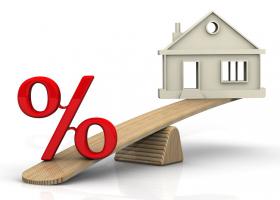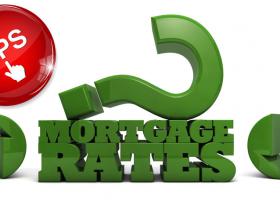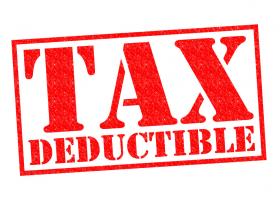Interest Rates: Fixed or Variable
When you apply for a mortgage, lenders may offer you options with either fixed or variable interest rates. Some lenders also offer a “hybrid” option that combines fixed and variable portions in the same mortgage.
Note: The interest rate option (fixed, variable or hybrid) is decided separately from the mortgage type (open or closed) described in Mortgage Types – Open vs Closed.
“Should I go with a Fixed Rate or a Variable Rate?” is an oft-asked question.
And like most things in life, Variable Rate Mortgages and Fixed Rate Mortgages each have their Pros and Cons – so here we will break down the comparison and hopefully you may draw your own insights into which is best for you.
Fixed interest rate mortgages
You will know in advance the amount of interest you will have to pay (assuming you don’t make any prepayments), and therefore how much of the original loan amount will be paid off during the term.
The interest rate is set or “fixed” when you apply for a mortgage. This interest rate remains the same for the entire term. The amount of your regular mortgage payments is also fixed.
After agreeing to a Fixed Rate Mortgage, you’ve in essence locked in a permanent rate for the rest of your term, even when the rates go down.
Variable interest rate mortgages
The interest rate can increase or decrease during the term. The interest rate varies with changes in market interest rates.
A Variable Rate Mortgage is a mortgage of any given term (usually 3 years or 5 years) where the interest rate moves in lock-step with your mortgage lender’s Prime Rate.
When a mortgage institution or lender offers you a Variable Rate Mortgage, they offer you a rate based off the Prime Rate. For example, your lender may offer you a rate equal to Prime Rate minus 0.50% or (Prime – 0.5%). Why is the rate offered to you worded this way? It is because the Prime Rate can both increase and decrease.
How changes in the interest rate affect your payments will depend on whether your payments are fixed or adjustable:
Fixed payments
- You pay one set amount with each payment.
- If the interest rate goes down, more of the payment applies to the principal and you will pay off your mortgage faster.
- If the interest rate goes up, more of the payment applies to interest, and less to the principal. Your lender may require you to increase your payments so that your mortgage will be paid off within the amortization period you had originally agreed to in your mortgage agreement.
- With fixed payments, you don’t know in advance how much of the principal will be paid off at the end of the term.
Adjustable payments
- Your payment amount changes if the interest rate changes. A set amount of each payment is applied to the principal, and the interest portion fluctuates depending on changes to the interest rate.
- If the interest rate goes down, your payments will decrease.
- If the interest rate rises, your payments also increase. This can make it more difficult to plan your mortgage payments over the term of the agreement, so you need to be sure you can adjust your budget to make higher payments.
- With adjustable payments, the amortization period stays the same. You can tell in advance how much of the mortgage will be paid off at the end of the term, because you pay whatever amount is needed to add up to the agreed amount.
However, whether you are better off with a variable interest rate mortgage compared to a fixed interest rate mortgage depends on whether the market interest rates go up or down during your term. This movement is difficult to predict. For example, between 2000 and 2012, the Bank of Canada Bank Rate, which impacts mortgage rates, varied from 0.5% to 6.0%.
Variable interest rate: how to protect yourself
Some lenders offer interest rate caps or convertibility features on their mortgages. These features can offer some protection if interest rates go up. You can get these features only when you sign a new mortgage agreement.
An interest rate cap is the maximum interest rate that can be charged on a mortgage, regardless of the rise in interest rates.
What influences the Prime Rate to move up and down?
The Prime Rate is largely influenced by the Bank of Canada’s Overnight Lending Rate. When the Bank of Canada moves the Overnight Lending Rate, you’ll see the Prime Rate move in the exact same manner.
The Bank of Canada announces whether it is moving the Overnight Lending Rate during scheduled announcement dates. The Bank of Canada typically holds 8 of these announcements each year and may choose to increase, decrease or keep the Overnight Lending Rate at status quo.
Ultimately, the fixed rate mortgage provides assurance and certainty; however, that comes at the price of a higher mortgage rate. If you, as a home-owner, are comfortable with the idea of a variable rate product, whose mortgage rate will shift up and down according to the prime rate, then a variable rate mortgage is the mortgage product for you.












